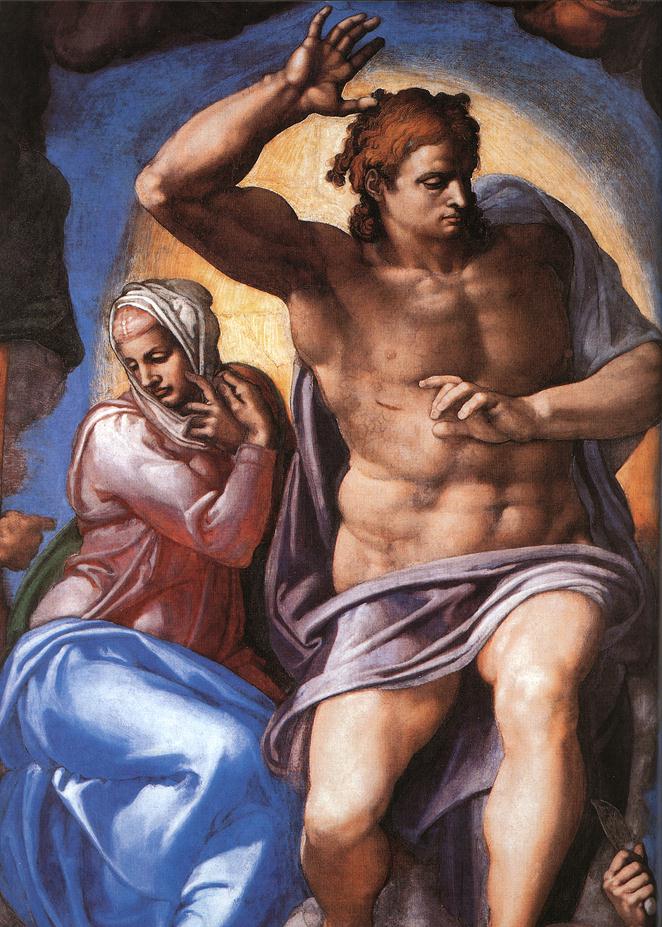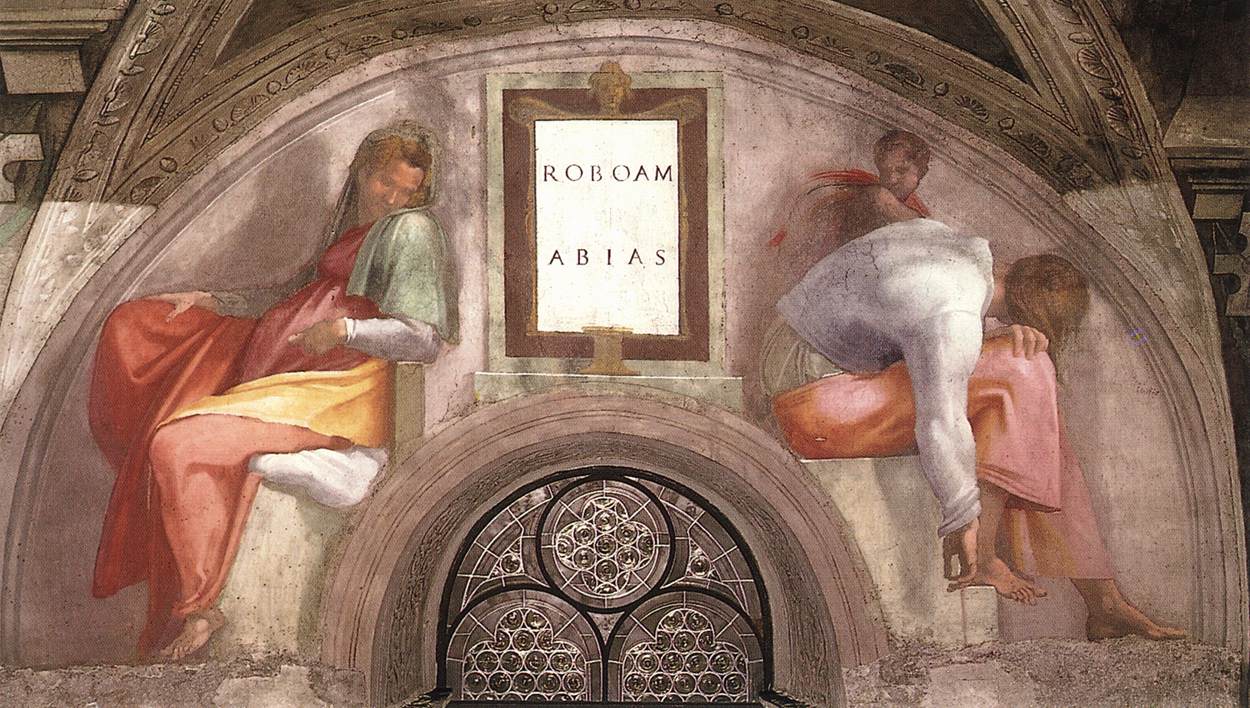 |
Last Judgment William Blake Enhanced Detail |
In his images of the Last Judgment Blake was using symbolic
language through the medium of graphic figures. He was not
commenting on specific individuals but on people who have passed
through various stages of development along the journey through
life. Blake read the Bible not to learn what events had taken
place in the past. He wanted to know what was going on in his own
mental development by knowing how biblical characters were
transformed. He wanted his readers to think about what they could
learn by considering what Abraham had done or what Moses had done,
not to imitate their behavior but to discern their motivation.
Consciously thinking in symbols is an introspective process.
In Golgonooza by Kathleen Raine we are shown the contrast
between writing history and presenting vision.
"This difference Between
Michelangelo's Judgment, conceived as history and taking place
in this world, and Blake's conception of the Apocalypse as a
vision of the inner worlds accounts for many differences in
composition and conception." (Page 146)
"[Blake's] purpose is not to
represent nature but invisible inner worlds." (Page 147)
Jerusalem, Plate 73, (E 228)
"but around
These, to preserve them from Eternal Death Los Creates
Adam Noah Abraham Moses Samuel David Ezekiel
[Pythagoras Socrates Euripedes Virgil Dante Milton]
Dissipating the rocky forms of Death, by his thunderous Hammer
As the Pilgrim passes while the Country permanent remains
So Men pass on: but States remain permanent for ever"
Kathleen Raine in Golgonooza states:
"Blake's symbolic figures are with very few exceptions Biblical,
and in the infernal caverns reign not the Classical Hades but the
seven-headed Satan of ST. John's Apocalypse. Nor did Blake
attempt, as did both Dante and Michelangelo, to make his painting
a political commentary on his own time by introducing living or
recent historical figures...Adam and Eve, Cain and Able, Abraham
and Noah are not for Blake historical figures but rather
symbolical." (Page 150)
Vision of Last Judgment, (E 556)
"it ought to be understood that the Persons
Moses & Abraham are not here meant but the States Signified by
those Names the Individuals being representatives or Visions of
those States as they were reveald to Mortal Man in the Series of
Divine Revelations. as they are written in the Bible these
various States I have seen in my Imagination when distant they
appear as One Man but as you approach they appear
Multitudes of Nations."
Although
Michelangelo painted to represent the condition of man and the
outcome of failing to conform to the expectations of religious
beliefs, he was more inclined to focus on his contemporaries. The
consequences of offending or sinning led to agony.
This information is from Secrets of Michelangelo's Last Judgment:
"When Michelangelo began work on The Last Judgment mural, Pope Paul
III instructed his Master of Ceremonies, Biagio da Cesena, to keep
an eye on its progress. Biagio was a conservative man and, upon
discovering the wall covered in nude figures, he attempted to
persuade the Pope to have the figures covered.
Unfortunately for him, Michelangelo convinced the Pope to let him
carry out his vision and, as an added touch, Biagio was later
added as a portrayal of Minos, the judge of the underworld, with
donkey ears and a snake wrapped around his groin. When Biagio
returned to the Pontiff to ask for his face to be removed, Paul
III jokingly explained that his jurisdiction did not extend to
hell!"
 |
Last Judgment Michelangelo Group of the damned |
.


.jpg)















